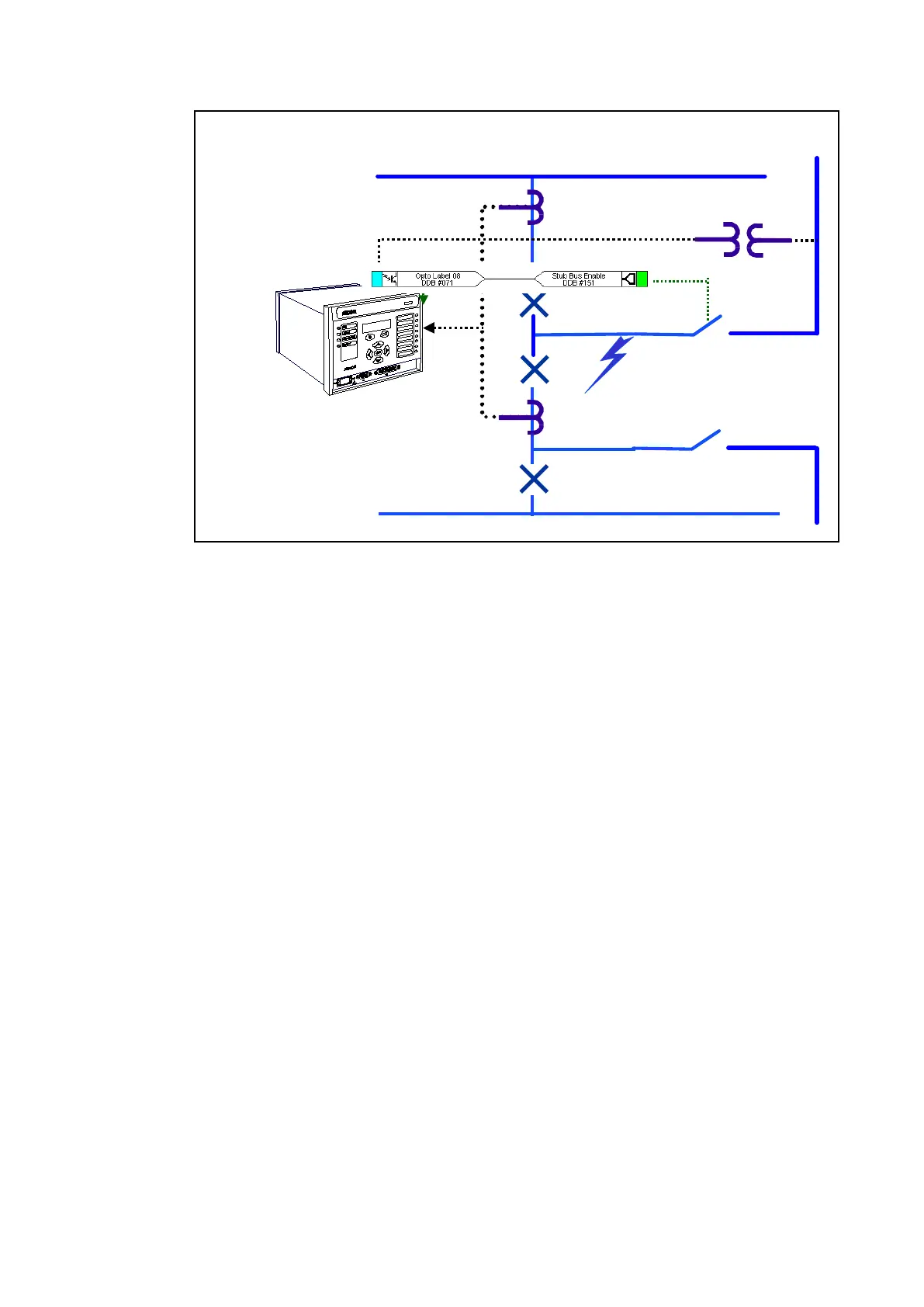P44x/EN AP/Hb
MiCOM P40 Agile P442, P444
(AP) 5-
P0536EN
I>4 Element: Stub Bus Protection
Busbar 1
Busbar 2
Open isolator
V = 0
I > 0
VT
Protection's blocking usingVTs
Stub
Stub
Bus Protection : I >4
Bus Protection : I >4
Figure 66: I>4 stub bus protection
Although this element would not need to discriminate with load current, it is still common
practice to apply a high current setting. This avoids maloperation for heavy through fault
currents, where mismatched CT saturation could present a spill current to the relay. The I>4
element would normally be set instantaneous, t>4 = 0 s.
4.4 Negative Sequence Overcurrent Protection
4.4.1 Setting guidelines
The MiCOM P44x negative sequence overcurrent protection elements include four
thresholds. The first and the second thresholds can be set as DT or IDMT trip delay time.
The curves are the same as for the directional and non directional overcurrent protection.
The current pick-up threshold must be set higher than the negative phase sequence current
due to the maximum normal load unbalance on the system. This can be set practically at the
commissioning stage, making use of the relay measurement function to display the standing
negative phase sequence current, and setting at least 20% above this figure.
Where the negative phase sequence element is required to operate for specific uncleared
asymmetric faults, a precise threshold setting would have to be based upon an individual
fault analysis for that particular system due to the complexities involved. However, to ensure
operation of the protection, the current pick-up setting must be set approximately 20% below
the lowest calculated negative phase sequence fault current contribution to a specific remote
fault condition.
Note that in practice, if the required fault study information is not available, the setting must
adhere to the minimum threshold previously outlined, employing a suitable time delay for co-
ordination with downstream devices. This is vital to prevent unnecessary interruption of the
supply resulting from inadvertent operation of this element.
A correct setting of the time delay is vital. It should also be noted that this element is applied
primarily to provide back-up protection to other protective devices or to provide an alarm.
Hence, in practice, it would be associated with a long time-delay.
It must be ensured that the time delay is set greater than the operating time of any other
protective device (at minimum fault level) on the system which may respond to unbalanced
faults, such as:
• Phase overcurrent elements

